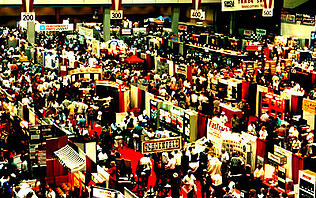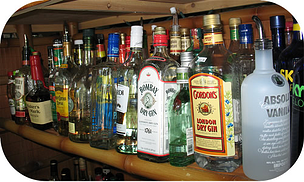The dictionary meaning of a dispenser is as follows: “a device that automatically dispenses a  single item or a measured quantity” In the hospitality industry, we are sometimes faced with a decision; do we want our liquor to be poured by way of a dispensing unit? Do we want our bartenders to be “automatic” and potentially take away any flair our personable bar staff has to offer our patrons?
single item or a measured quantity” In the hospitality industry, we are sometimes faced with a decision; do we want our liquor to be poured by way of a dispensing unit? Do we want our bartenders to be “automatic” and potentially take away any flair our personable bar staff has to offer our patrons?
Liquor dispensers are designed to specifically pour a pre configured amount in a glass, no more, no less. There can be certain advantages:
- Consistency of drinks
- Controls over quantity poured
- Less bartender training required
Liquor dispensers typically are available in two forms: guns & spigots.
Guns normally entail tubing to be run from the bar to an area where the liquor is poured into small vats. From there, as a product is selected at the bar, the liquor from the liquor room runs along the line into the patrons drinks. Many times, operators will limit the guns to rail product like vodka, gin, rum…or what we call high moving products.
Spigots or what can be best described as “time release valves” are systems in which a ring is placed around a nozzle on the bottle. When a portion of liquor is requested, the bottle is put through the activator ring, the lever is pressed and an electrical courant opens the valve to dispense a portion of liquid.
Although we may perceive these systems as the ultimate controls, there are a few things to consider:
- If you have several pouring stations, they can become cost prohibitive
- They can be impersonal: clients still like to see a bartender pour a drink straight into a glass without all the “mechanics” involved
- Sweet liquors have a tendency to crystallize and cause back ups in the lines and spigots thus requiring regular maintenance.
- Lack of inventory: as much as these systems can dispense exact amounts, they still require a separate system to conduct regular liquor inventories
In the end, as an operator, the decision lies in both the financial areas but also the image and feel you want your establishment to portray, both certainly will have an impact on your business and this is certainly a decision that takes time and research before adapting.


 An inventory count can be best described as a physical inventory of what is currently in stock in the storage areas, comparing that count to what the liquor, beer and wine inventory count software thinks is in stock, and making any necessary adjustments to get the liquor, beer and wine inventory count software to match the storage area counts.
An inventory count can be best described as a physical inventory of what is currently in stock in the storage areas, comparing that count to what the liquor, beer and wine inventory count software thinks is in stock, and making any necessary adjustments to get the liquor, beer and wine inventory count software to match the storage area counts. 
 The primary goal of any establishment that sells
The primary goal of any establishment that sells 
